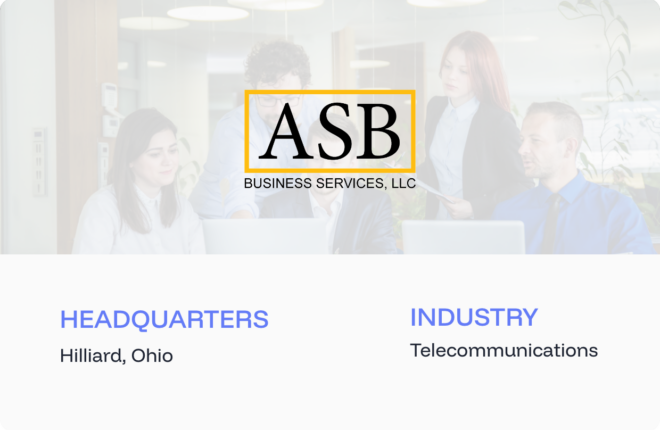So, you’ve found a prospect that’s a good fit for your product or service, reached out to them, and established initial contact.
That’s a great start, but don’t be disappointed if all you get is crickets.
In reality, 80% of sales require at least five follow-ups, while 48% of salespeople never make even a single follow-up attempt.
It’s easy to conclude that persistence is crucial for landing a customer and closing a deal. But the trouble is that the line between being persistent and being annoying is extremely fine.
In other words, if you don’t want your prospects to roll their eyes when they see your name in their inbox or on your smartphone screen, it’s crucial to find the right balance. Although it’s true that you should stand out from all the others trying to grab their attention, this isn’t the way.
Here are a couple of strategies to help you follow up with your prospects without them thinking, “Oh, not you again!” to themselves.
Ask for Guidance
Research is critical to understanding your prospects and their needs, but the best way to obtain information about their preferences regarding your follow-up is to ask them directly.
For example, if you’ve had a call or demo with a potential customer, and it turned out that they could potentially need your solution in the future, don’t hesitate to ask them how to keep in touch and when to follow up.
The worst thing you can do is letting your prospect end a meeting with “Talk to you soon.”
This puts you in an unfavorable position because it implies that they’re the one that will reach out to you. In order to take control of the communication, it’s best to define the next step and schedule the next meeting.
However, following up just in order to touch base without adding value to your prospect will only waste your and their time. So, ask them whether there’s anything that they need to know about the industry, their role, or your solution, and make a detailed presentation. If there’s a feature or functionality that they specifically need, let them know you’ll contact them when it’s available.
In a nutshell, do try to find out how to add value to your prospect and improve their life as that’s the only way for your follow-up to work.
Use Different Channels to Build Rapport
Traditional methods salespeople use to connect with their prospects are phone and email. Although these two are crucial because they’re direct, especially when it comes to sending offers and propositions, you shouldn’t neglect less formal channels.
Social media, for example, is an excellent channel for building rapport, getting to know your prospects better, and even warming up your cold leads before you start your official campaign.
B2B salespeople can connect with their prospects on LinkedIn and start engaging with them by commenting on their status updates and the content they share. This is a subtle way of staying on their radar, meaning that when you follow up with them, your name will ring a bell as you won’t be just a random stranger writing to them out of the blue.
Additionally, consider incorporating innovative tools like magic links, which provide a seamless and secure way to share relevant content and information with your prospects, enhancing your communication strategy.
Another very effective and useful tactic that you and your inside sales team should use is asking for referrals.
According to stats, referrals account for 65% of new business.
Getting a happy customer to vouch for the quality of your solution can be the right kind of nudge your prospects need in order to actually open your email and take your offer into serious consideration.
But, there’s another way to find open sesame to your prospects’ priority inbox – talking to their own salespeople. This is a particularly effective tactic for target accounts as they’re worth investing your time and effort. You can easily find out how that particular company works internally, who decision-makers are, what kind of solution they need, and who’s responsible for what.
A referral or an introduction from a salesperson who works for the company can significantly help your follow-up efforts.
Personalize Your Follow-Up
Nobody wants to receive a generic email that’s clearly been sent to hundreds or even thousands of other recipients.
If you want to prevent coming off as a spammer, your follow-up has to be highly personalized and tailored to your prospects’ interests and pain points.
The first step is segmenting your audience and creating smaller lists based on your prospects’ industry, job title, demographics, and other relevant traits that make them unique.
After that, craft an email sequence template that you can personalize and send using an email automation tool. This sequence should have more than five follow-ups, but make sure to use the tool that will stop sending messages after a recipient responds.
When we’re talking about big or important prospects that have the potential to become key accounts, it’s a good idea to use all the available resources to find as many details about them as possible and use this detailed information to come up with highly-targeted and personalized follow-up emails. For example, you can quote something that this particular prospect said on social media or mention an article featuring them or their company. This way, you’ll show that you’re well-informed about them, and you’ll be able to better align your solution to their current needs.
Build an Effective Cadence
Being persistent doesn’t mean spamming your recipients’ inboxes unselectively.
The frequency of your follow-up activities is an important element that decides whether you’ll make a good impression or not – you don’t want to disturb your prospects, but on the other hand, you also don’t want to sink into oblivion.
It’s best to send your first follow-up 24-48 after the initial email, call, or any other attempt to reach your prospects.
The second follow-up should come no sooner than the next 2-4 days.
As you can see, the rule is to make longer breaks between emails or calls so that you don’t look like someone who’s too desperate.
Send the third follow-up approximately 5-7 days later, while the optimal time for launching the fourth one is on day 10 of your campaign.
This is just an example, and after this first part of the campaign, you can choose to contact your prospects once in two weeks.
As for whether it’s time to call it quits, you don’t have to worry about that because unless a prospect opts-out or explicitly tells you to stop writing, you can try to get them to respond. However, if you notice that there’s no response after some time, you can send them a break-up email and withdraw.
Although following up is an essential sales strategy, many sales reps fail to leverage it properly. These tips will help you plan and structure your follow-up as well as show you what you should avoid doing in order to prevent unsubscribes and poor conversion rates.





